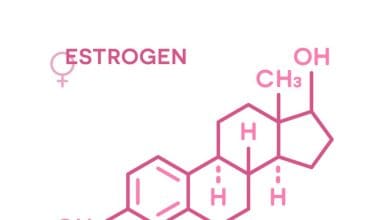Diabetes (sugar disease) – Symptoms, Diagnosis
If you notice (in yourself or your children) alarming symptoms, see your personal doctor. He will question you carefully, pay special attention to the presence of diabetics in your family, and examine the value of your blood sugar.
If the results of the examination and tests confirm the suspicions of impaired blood sugar control, your GP will refer you to a specialist endocrinologist (a doctor who specializes in the prevention, detection, treatment and control of all diseases of the endocrine glands). The endocrinologist will make the final diagnosis and determine the exact type of the disease.
When should you seek medical attention?
Seek medical attention if you suffer from sudden or gradual onset of intense and persistent thirst, frequent and large urination, unexplained weight loss, nausea and vomiting, dizziness, confusion, or any of the diabetes symptoms listed above. Patients with diabetes mellitus (both type 1 and type 2) should visit a specialist doctor regularly in order to achieve precise blood sugar control and prevent or delay the development of diabetic complications.
With varying urgency, medical help should also be sought for signs of development of some of the acute and chronic complications of diabetes mellitus (See “What are the most common complications of diabetes mellitus?” and “What can be done to prevent or slow the development of complications of diabetes mellitus?”)
When do diabetes symptoms appear?
Complaints of type 1 diabetes usually appear in childhood or adolescence. Symptoms appear suddenly, for a short period of time (this moment occurs when more than 80% of the insulin-producing beta cells of the pancreas are destroyed). Before that, the patients did not have any complaints. Usually, at first, there is rapid weight loss without loss of appetite, increased urination, patients start getting up at night to urinate without having done this before, etc.; often the first appearance may be more discreet, e.g. absent-mindedness and difficulty concentrating in the child. In some cases, type 1 diabetes manifests itself directly with ketoacidosis and possibly subsequent loss of consciousness and coma (sometimes this can be the first noticeable sign and not the first symptom of the disease at all). Nausea and vomiting appear the patient’s breath smells of acetone or fruit, the patient gradually loses consciousness, and convulsions may occur. Ketoacidosis causes acidification of the blood as a result of cells switching energy production from glucose to other energy sources.
Complaints in diabetes mellitus type 2 occur gradually, this is due to the smoother development of insulin resistance, with the accompanying increased production of insulin, until the exhaustion of the capacity of the beta cells of the pancreas and absolute insulin deficiency. Classically, the disease develops in mature and advanced age (over 45 years), in people suffering from obesity (often in combination with other disease states, collectively referred to as metabolic syndrome X – see above). Often, a patient can suffer from diabetes for many years before they know about it. Sometimes severe dehydration caused by high blood sugar (whether or not caused by another disease) can cause the life-threatening condition hypersomal nonketone syndrome and coma, which resemble the symptoms of diabetes (hyperglycemic, ketoacidosis) coma and be the first manifestation of the disease.
What are the main symptoms (complaints it causes) of diabetes mellitus?
The early symptoms of type 1 and type 2 diabetes are due to high blood sugar and the loss of glucose in the urine. With few exceptions, these symptoms are common to both major types of diabetes. Early complaints in type 1 and type 2 diabetes differ in their severity, manner of appearance, speed of appearance, etc.
Common symptoms of the two main types of diabetes mellitus:
- fatigue and easy fatigue – in diabetes mellitus, the cells of the body are unable to absorb their main energy source – glucose – from the blood; in order to obtain energy for all life processes, the cells begin to process other substances such as fats and proteins, which do not fully release energy. Without enough “energy” the body gets tired easily.
- unexplained weight loss – despite normal or even higher food intake, diabetics lose weight because they lose a lot of calories with glucose, which on the one hand cannot “enter” the cells to be broken down, and is wasted with urine. Body weight also decreases due to dehydration, which is a consequence of high blood sugar.
- strong thirst (polydipsia) – the high concentration of glucose in the blood increases the osmotic pressure; in order to restore the balance, part of the intracellular water is released into the blood; exceeding the renal threshold, glucose begins to be excreted in the urine and “takes” more water with it – as a result, the body becomes dehydrated; on the other hand, the increased osmotic pressure of the blood and the dehydration of the cells signal to the brain, resulting in a feeling of thirst as a compensatory reaction.
- increased urination (in a larger amount, and in most cases more frequent urination) – this is a kind of attempt by the body to “get rid” of the large amount of glucose in the blood, which anyway fails to be used by the cells; the kidneys have a so-called “glucose threshold” – this is a blood sugar value above which the excretion of glucose begins in the urine; a large amount of glucose “pulls” with it a significant amount of body water, and as a result, increased urination occurs.
- increased appetite – this symptom is usually more pronounced in type 2 diabetes, where there is a high level of insulin (it stimulates the feeling of hunger); on the other hand, insufficient energy reaching the cells causes the body to acquire more calories and more food; this manifests itself as a feeling of hunger and increased appetite.
- difficult and delayed healing of wounds – high blood sugar values prevent the normal functioning of white blood cells, which are the main element in “cleaning” dead tissues in the body, healing wounds, and fighting the causes of infections; moreover, over a longer period of time, diabetes mellitus leads to sclerosing and thickening of the smallest and largest blood vessels, and this causes impaired blood flow, poor tissue nutrition (including access to oxygen and protective elements of the blood), and hence slower and difficult wound healing and more frequent infections.
- infections – suppressed general immunity, poor blood flow in the tissues, and high concentration of glucose (a good food environment for many bacteria) contribute to the frequent appearance of some infections that are characteristic of diabetes mellitus – these are frequent fungal infections of the genitals, skin infections (boils, “purulent pimples”), urinary tract infections, etc.
- blurred vision – blurred vision is not a specific complaint of diabetes mellitus, but occurs often with high blood sugar values; in the lens of the eye, glucose is converted to sorbitol, which retains a lot of water; as a result, periodic “swelling” and “shrinking” of the eye lens occurs; this is the cause of blurred vision.
- altered mental-psychic state – there is often tension, inexplicable irritability, severe lethargy or confusion, the patient seems inadequate, the symptoms may resemble those of a stroke; these complaints can be due to high blood sugar (hyperglycemia) alone, they can be symptoms of some of the most serious acute complications of diabetes such as ketoacidosis (and subsequent diabetic coma) or hyperosmolar hyperglycemic syndrome and coma such as very low blood sugar (hypoglycemia); therefore, the appearance of any of these symptoms requires immediate medical attention!
- ketoacidosis – inability to absorb glucose causes cells to look for other sources of energy and break down other substances; as a result, so-called “keto bodies” can be obtained; they change the acid-alkaline balance of the blood to an acidic pH, which has serious consequences for the work of all cells and especially those of the nervous system; uncontrolled ketoacidosis causes the above-described symptoms of confusion, irritability, nausea and vomiting, etc., which can progress to coma and even death if not treated. Ketoacidosis is often the first manifestation of type 1 diabetes in adolescents and young adults. This condition is related to the acute complications of diabetes mellitus. Ketoacidosis is often provoked by conditions and diseases that place higher demands on the metabolism of cells with higher insulin requirements.
- hyperosmolar non-ketone syndrome and hyperosmolar coma – this condition occurs as a result of the high concentration of glucose and severe dehydration of cells; the symptoms of this condition are very similar to those of ketoacidosis; this condition is often the first manifestation of type 2 diabetes and is even life-threatening if no measures are taken; the development of this condition is often caused by other diseases.
As a result of the increased urination, drinking a lot of fluids, switching the metabolism of the cells, and possible nausea and vomiting, a disturbance in the concentrations of serum electrolytes (mainly potassium) can be reached, which can also be very dangerous and require immediate medical attention. help.


